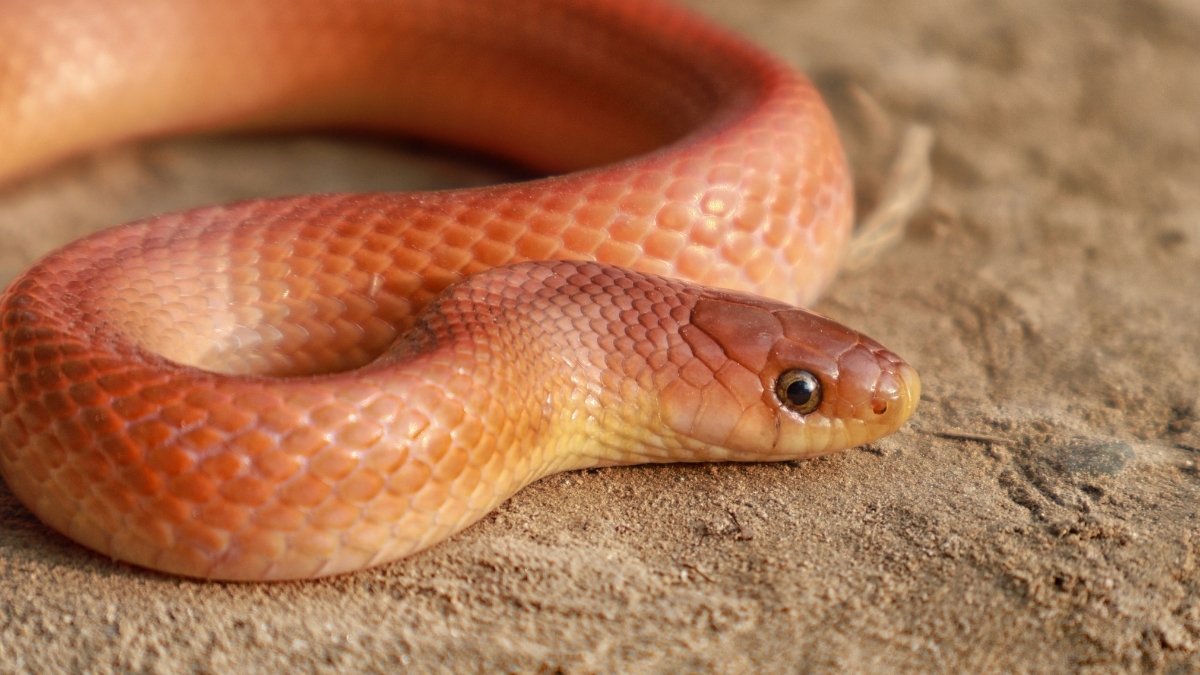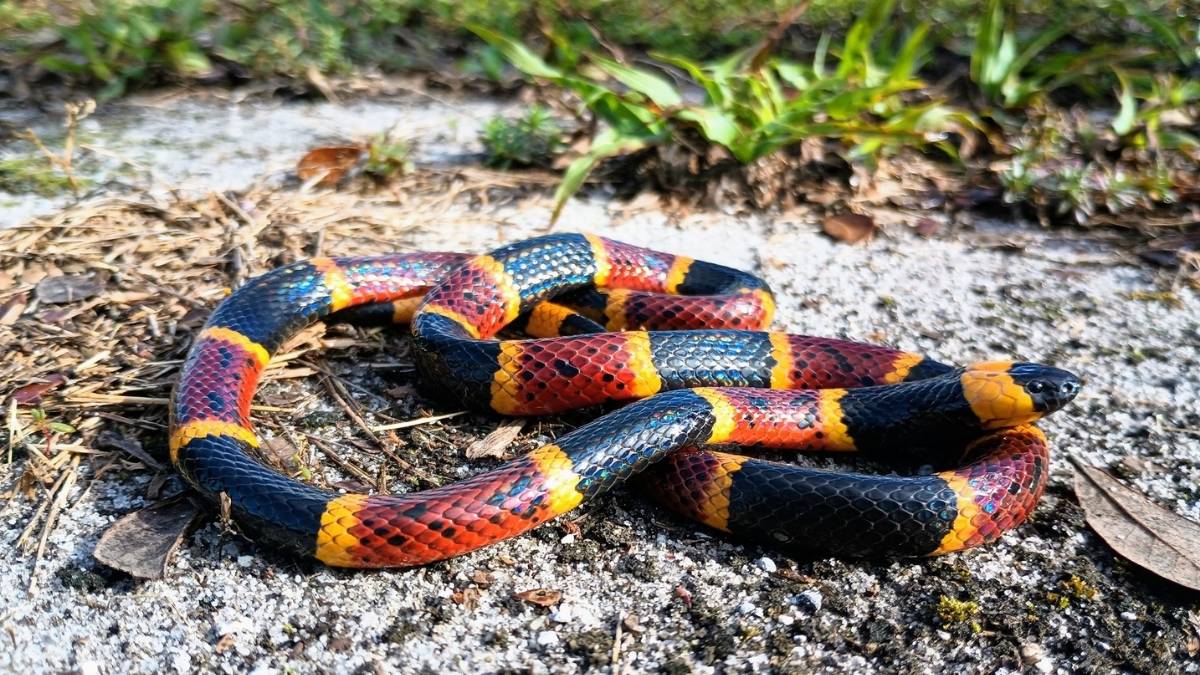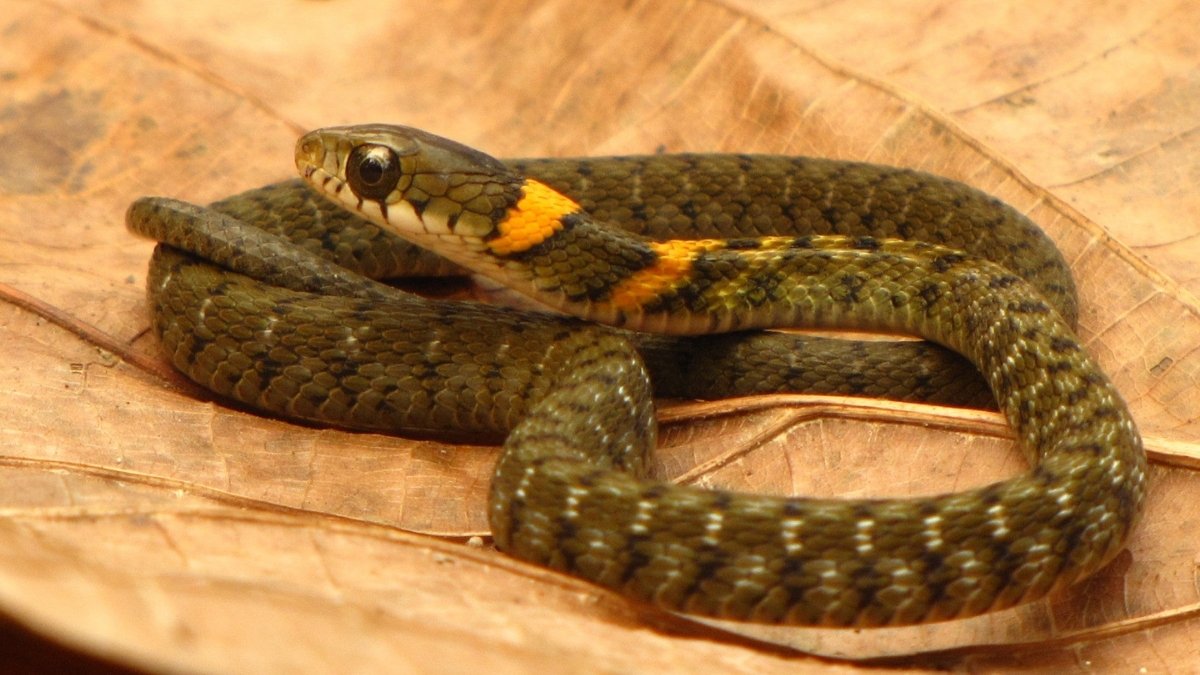Orange snakes are easy to spot in the wild because of their bright colors. Did you know that some of them are among the rarest reptiles on Earth? These animals are both beautiful and mysterious. For example, India's rare coral red kukri snake (only a few have been seen) and South America's poisonous orange-banded coral snake. Scientific reports say that corn snakes, ring-necked snakes, and other snakes have bright orange patterns on their bodies that help them hide or warn others. The coral red kukri (Oligodon kheriensis) was found again in 2020 in Bangladesh and India after being lost for decades. This shows how rare and hidden these snakes still are. Let’s hop on and read more about the five rarest orange snakes on the Earth that are work of natural marvel.
Which are the 5 Rarest Orange-Coloured Snakes in the World?
Here are five of the rarest orange-coloured snakes found worldwide, ranging from harmless kukri snakes to venomous coral species. Some, like the Saint Lucia racer, are critically endangered, while others are still common but still amazing.
Their IUCN Red List status helps figure out what risks they face in order to help protect these one-of-a-kind reptiles from going extinct.
| Name of Orange Snake | Scientific Name | Location(s) | Venomous? |
| Coral red kukri snake | Oligodon kheriensis | India, Bangladesh | No |
| Orange-banded coral snake | Micrurus hemprichii | South America | Yes |
| Orange-collared keelback | Rhabdophis himalayanus | Himalayan region | Mild / rear-fanged |
| Golden tree snake | Chrysopelea ornata | South & Southeast Asia | Mild |
| Saint Lucia racer | Erythrolamprus ornatus | Saint Lucia, Caribbean | No |
1. Coral Red Kukri Snake

This non-venomous species has a vivid orange-red body and is one of the rarest snakes in South Asia. First described in India in 1936, it was thought to be nearly extinct until a live specimen was recorded in Bangladesh in 2020. According to Mongabay India, habitat loss is a major threat to its survival. IUCN Status: Data Deficient.
2. Orange-banded Coral Snake

This striking snake with bright orange bands is native to the forests of South America. It belongs to the venomous coral snake family, which is known for potent neurotoxic venom. Encyclopedia of Life notes that the orange-banded coral snake usually lives in dense forest undergrowth and avoids human contact. IUCN Status: Least Concern.
3. Orange-collared Keelback

Found in the Himalayan foothills of India, Nepal, Bhutan and Myanmar, the orange collar behind its head makes this snake easy to identify. Although rear-fanged, it is considered only mildly venomous. IUCN Red List records this snake as Least Concern, but its population remains understudied.
4. Golden Tree Snake

The ornate flying snake, also known as the golden tree snake, is famous for how well it can glide between trees. Juveniles often display orange or red spots on their underside along with green and black scales. Smithsonian’s National Zoo reports that it is mildly venomous and mainly feeds on lizards, frogs and small birds. IUCN Status: Least Concern.
5. Saint Lucia Racer
The Saint Lucia racer is often described as the rarest snake in the world. Fewer than 20 individuals survive on a small islet off Saint Lucia. The Durrell Wildlife Conservation Trust says that there are conservation programs in place to stop species from going extinct. IUCN Status: Critically Endangered.
Check Out: What are the 11 Oldest Countries in the World? (Updated List)
These breathtakingly stunning orange snakes show how colorful and fragile reptiles can be. Each snake helps keep the ecosystem in balance, from critically endangered island species to secretive forest dwellers. It is still very important to do conservation work to make sure these unique reptiles stay alive in the wild.
Comments
All Comments (0)
Join the conversation